Generative AI has reached a point where it can churn out blog posts, ad copy, and product descriptions with impressive fluency. While it writes well, it rarely writes like you.
Obviously, the quirks and personality that make your brand recognizable don’t automatically appear in machine-generated drafts.
That’s why so much AI-written content feels monotonous.
And frankly, who would even remember a brand that puts no effort into making itself stand out?
You cannot reject AI, but you really need to train it rigorously so it mirrors your tone.
Even if it can’t replicate your voice with 100% accuracy, it can get close enough that the difference is negligible.
Therefore, in this article, we discuss practical, strategic methods to keep your brand tone intact while still reaping the time-saving benefits of AI tools.
Key Takeaways
- AI requires structured training to match brand tone. You must feed it tone prompts with sample datasets from top-performing content and brand-specific “good vs. bad” examples.
- Tone, voice, and style are distinct marketing terms. Voice is your brand’s constant personality. Tone is the emotional inflection that shifts with context. And style is the way you execute your voice and tone through your word choices, formatting, and sentence structures.
- AI training is an ongoing process, so feedback loops and iterative corrections are essential to keep AI tools aligned to your tone.
How AI Tools Can Be Trained to Match Your Brand
Put simply, AI learns from the examples you give it.
If you want on-brand output, you need to provide it with prompts that describe your reference tone and style with plenty of “good vs. bad” examples of content.
AI tools can be trained with sample datasets pulled from your highest-performing brand content.


Never Worry About AI Detecting Your Texts Again. Undetectable AI Can Help You:
- Make your AI assisted writing appear human-like.
- Bypass all major AI detection tools with just one click.
- Use AI safely and confidently in school and work.
Many teams also maintain prompt libraries or branded “prompt packs” that serve as templates to ensure consistency. These brand-specific libraries include:
- Phrases you frequently use
- Phrases you avoid
- Preferred sentence structures
- Approved taglines
The problem with AI tools is that they won’t stay aligned if you treat training as a one-and-done exercise.
They learn best through feedback loops.
Continuously review and rate the output and flag any off-brand phrasing to create an iterative cycle in which the tool gradually internalizes your brand tone.
Yes, it requires upfront effort, but once you start producing brand-specific content at scale, there’s no going back.
What Is Brand Tone?
Brand tone is the emotional inflection behind your words.
It is the ‘vibe’ your audience gets while reading your website or scrolling through your social posts.
Two brands can convey the same concept, but a difference in tone will make the text relevant to a different audience.
The tone is not static. You can change it slightly depending on the context, but it should always reflect your brand’s core personality.
Difference Between Tone, Voice, and Style
When talking about branding, marketers love to throw around “voice,” “tone,” and “style” quite a lot.
Let’s set the record straight.
Brand voice is the personality of a brand that remains consistent across all platforms.
For instance, Mailchimp’s voice is quirky but professional. It doesn’t suddenly turn corporate on the website and casual on socials.
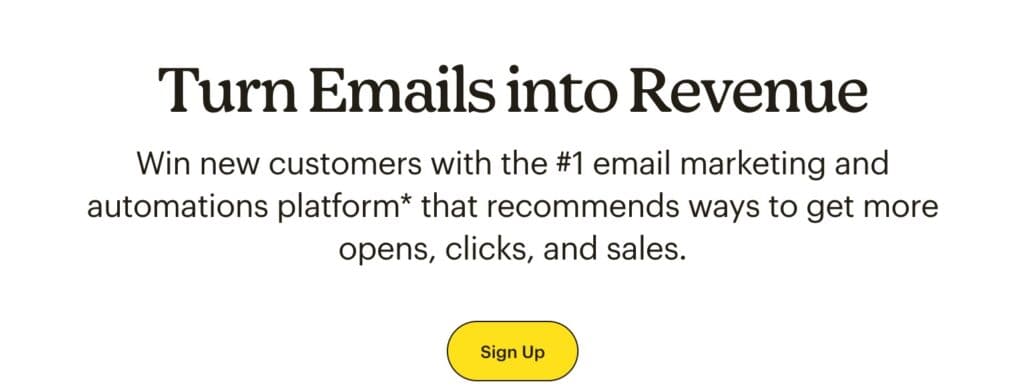
Tone, however, is situational. Announcing a feature outage requires a calm, empathetic tone, whereas a new product launch needs an exciting tone.
Style is the way you execute your branding. It refers to word choices, sentence structures, formatting, punctuation, etc., in your marketing material.
Examples of Brand Tones: Playful, Professional, Bold, Friendly
Brands change their tone when addressing audiences from different backgrounds.
Let’s use Slack to understand it.
Go through Slack’s online presence, and you’ll find pretty noticeable differences in tone as the context for the text changes.
In a blog post about interface refreshes, for example, Slack uses conversational flair.
As in, “For many users (and soon, everyone), Slack looks a little different.”
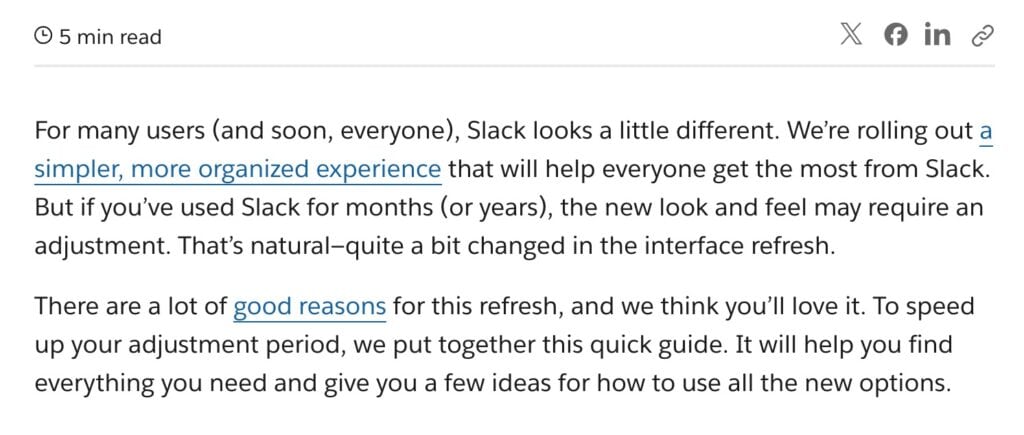
However, the tone switches to a more structured, authoritative mode with no humor when talking to large organizations.
The blog post titled “Security at scale: What’s new for enterprises” uses a serious tone throughout.
Slack doesn’t often go ultra-brawny in its messaging, but when needed, it does sometimes display boldness.
For instance, “Here at Slack, it is our deepest belief that you don’t have to sacrifice security in order to work with agility.” See how opinionated and assertive this sentence sounds.
And at occasional instances of a Slack outage, you will find the tone to be very empathetic, even apologetic.
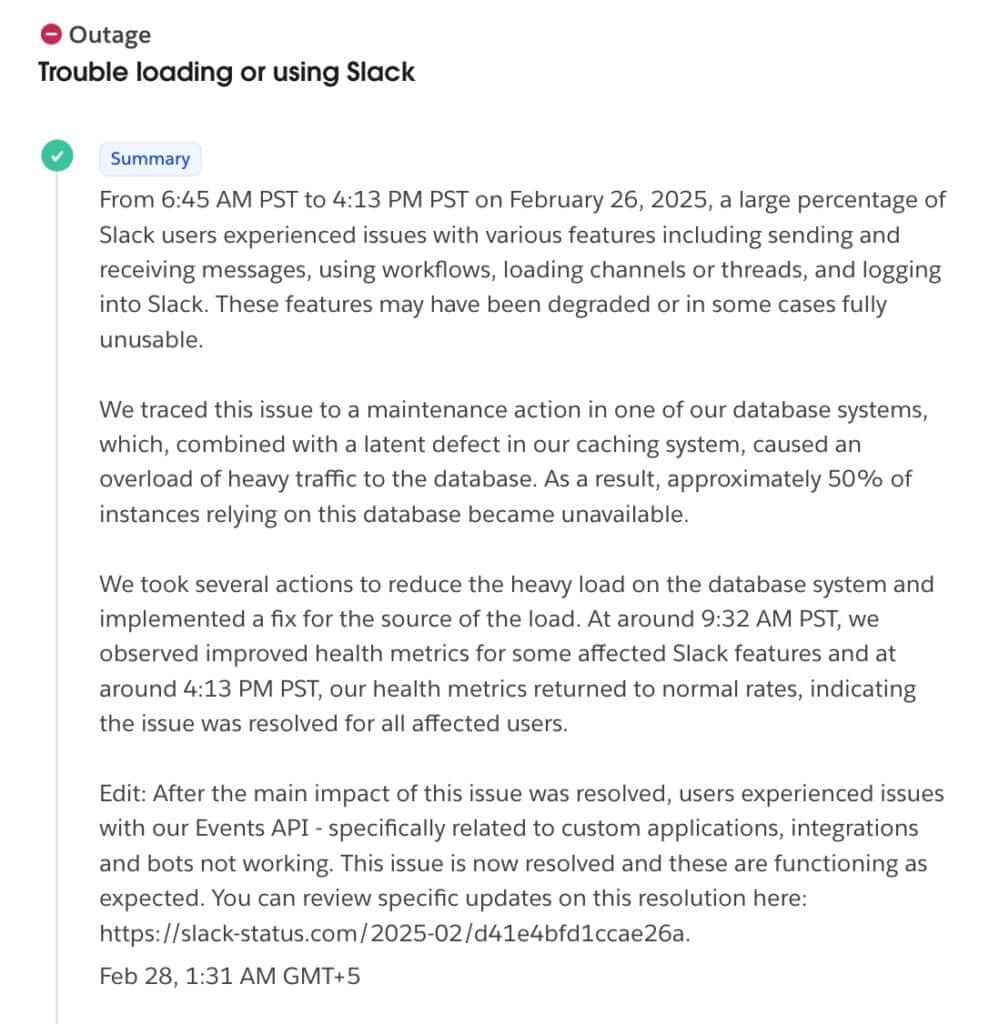
How Inconsistent Tone Erodes Trust
Brand tone should always remain the same in similar contexts.
If you decide on a conversational, humorous tone for your emails, you can’t suddenly sound like a stiff corporate attorney in your next campaign, unless the situation truly demands it (like a data breach or serious outage).
Otherwise, your customers will feel like they’re speaking to two different companies.
And if they can’t predict your tone, they can’t rely on your voice.
Consistency tells your audience that you respect their experience with you.
How to Get AI to Match Your Brand Tone
Before you get AI to match your brand tone, you need to know what your tone actually is.
Get an expert to audit your current marketing material, such as your website, emails, social media, and campaigns, and distill your tone into clear traits.
Now, feed AI your best-performing campaigns, blog posts, or customer emails and explicitly mention the tone traits you get after an audit.
A smart prompt with detailed tone insights will produce a much better output.
Also, train AI on your in-house material before letting it loose on big campaigns.
When AI learns your tone from actual brand-approved content, it starts reinforcing your identity at scale.
Best AI Tools for On-Brand Writing
You’ll find plenty of AI content creation tools that can spit out content.
However, very few actually get specific enough to follow your brand tone.
Here are our top recommendations to get on-brand writing.
1. Undetectable AI – Stealth Writer
Stealth Writer is a high-grade filter that takes your AI-generated text and makes it indistinguishable from human writing.
And no, it does not spit the same text out with a few words swapped, it actively restructures sentences, varies rhythm, and introduces natural language patterns learned through your brand tone.
The workflow is pretty simple. You just have to paste in your AI text and hit ‘process’.
The tool will “humanize” it in seconds with the exact tone your brand is known for. Customers shouldn’t be able to tell where the human-written content stops and the AI starts.
2. Undetectable AI – SEO Writer
Traditional SEO content workflows used to be either time-intensive (writing everything yourself) or expensive (outsourcing to freelancers or agencies).
Undetectable AI SEO Writer solves both of these problems.
The tool requires you to answer a few quick questions about your tone, target audience, and keywords.
Then you pick a word count and let the system generate a piece optimized for both humans and algorithms.
The real advantage here is that the platform combines advanced keyword research with a proprietary humanization engine.
The context it created reads exactly like something you would publish.
Practical Use Cases for Brand-Tone-Matching AI
When we talk about practical use cases for brand-tone-matching AI, blog writing is at the top of the list.
Brands need articles that not only rank but also sound unmistakably like them.
Undetectable AI SEO Writer blends tone-matching with search optimization in a very structured workflow.
Firstly, you tell the AI who you are, i.e., your company website, product, target demographic, and subject matter.
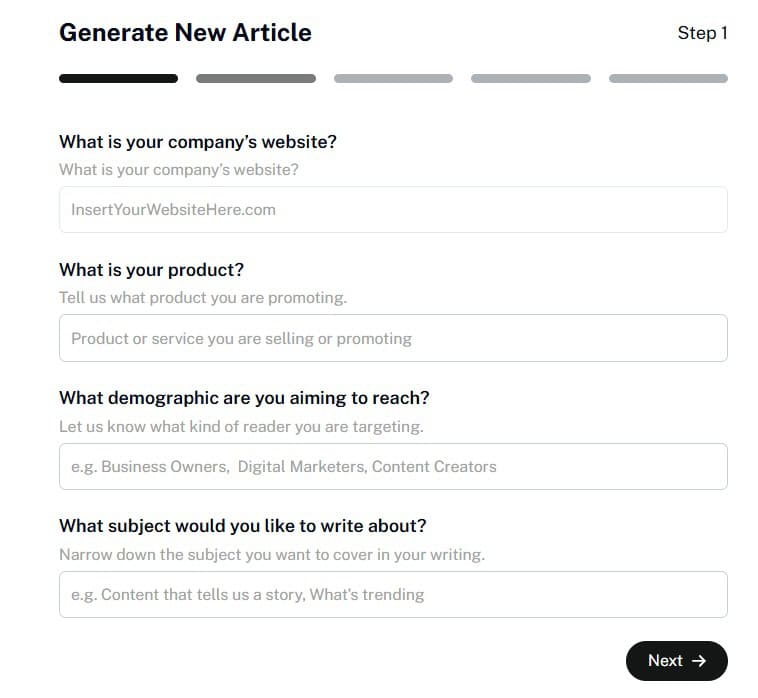
In the next step, the tool automatically pulls search-relevant keywords for your audience and niche.
Select the relevant keywords that align with your content strategy to ensure your blog post fits your tone and performs in search engines.

Next, it will suggest blog titles optimized for conversions and SEO. Click the one that matches your brand’s voice.

If you also want to add AI-generated images in the blog, there’s a custom option to create visuals. Again, just define what you want your image to look like, and they will be auto-generated. You may also want to improve the overall images, by using an AI image editor to enhance the results.
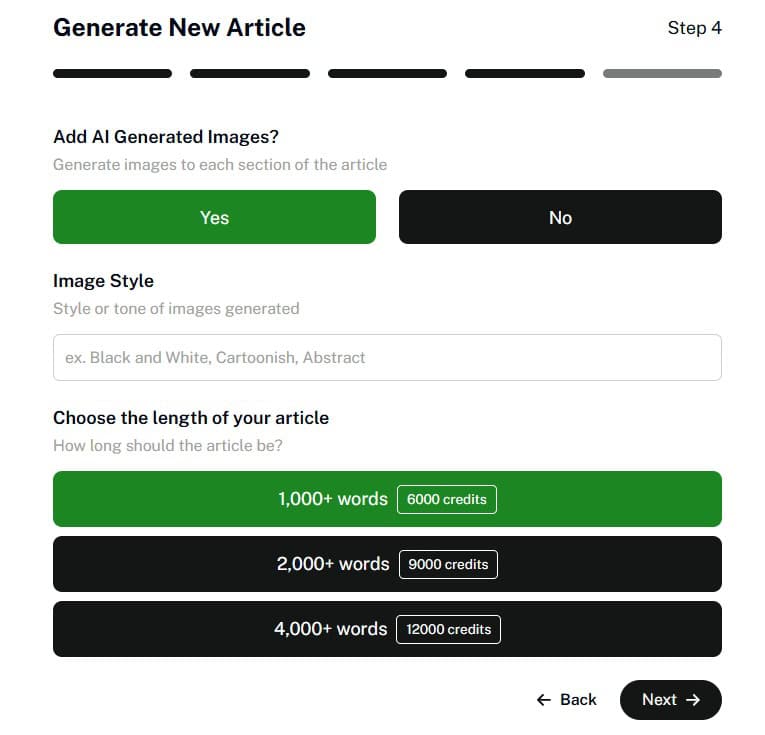
Finally, the blog writer suggests a structured outline, complete with sections that flow logically.

If you want authority signals, toggle Add External Links, and each section will also cite relevant sources.
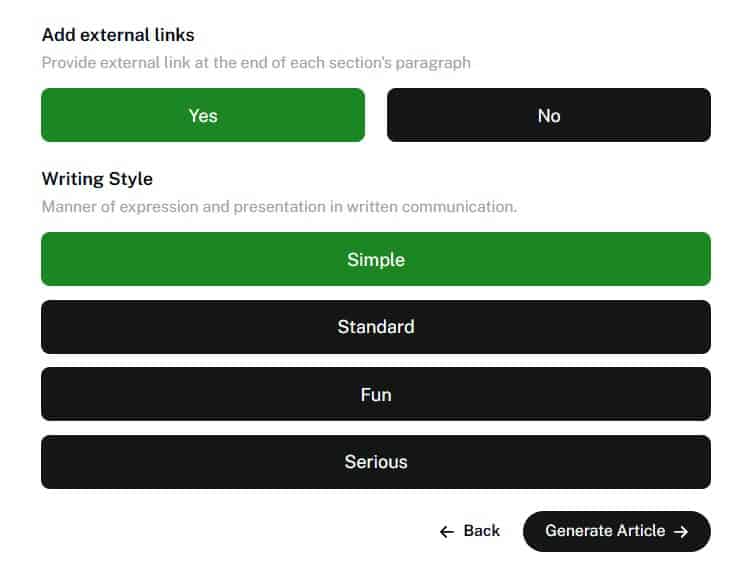
How to Audit AI Output for Brand Fit
The point of AI is speed and scalability, but the point of your brand is differentiation.
Every sentence produced by AI must be put through a filter that answers if it really sounds like you or if it is just an off-brand monologue that belongs to every company and no one at the same time.
Always audit the tone of the AI-produced text by reading the draft aloud. Also, check for any formatting errors.
AI tends to produce neatly bulleted lists and symmetrical subheadings, which may clash with your editorial guidelines.
f your brand prefers punchy paragraphs and conversational transitions, rework the flow.
Once you’ve handled voice and format, run the text through a grammar checker to smooth out any linguistic errors.
Finally, always make sure to fix run-on sentences or repetitive constructions through the Humanizer tool.
The truth is, AI gives you scale, but scale without brand control is noise.
Treat AI as your fast first draft, then enforce brand fit with ruthless editing. That’s how you publish at speed without losing your brand tone.
See our AI Detector and Humanizer in action—just use the widget below!
Final Thoughts
Most AI-generated drafts stumble on the same flaw, i.e., they’re too generic, too symmetrical.
That’s the core problem we built Undetectable AI to solve. Our tools generate text that adapts to match your exact brand tone.
Layer in feedback loops and examples from your best in-house content, and it sounds very close to a member of your team.
With Undetectable AI’s Stealth Writer, SEO Writer, and Grammar Checker, you can create content that’s optimized, polished, and truly indistinguishable from human writing.
Give Undetectable AI a try today.
